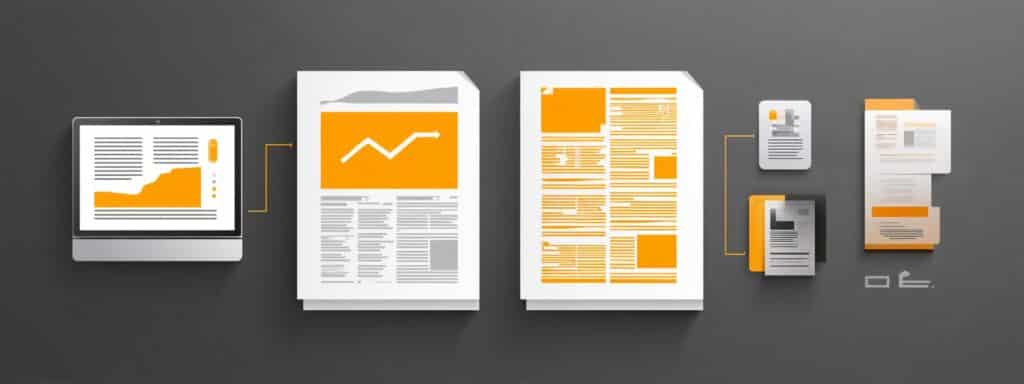Making Print Accessible: How WCAG is Applied to Create Compliant Digital Documents
When people think about accessibility, they often picture websites. However, accessibility is not limited to the web. Documents designed for print, particularly those distributed as PDFs, must also meet accessibility standards so that people with visual, cognitive, or motor impairments can use them. This is where the Web Content Accessibility Guidelines (WCAG) come in. Created to make web content more inclusive, WCAG also provides a framework for ensuring documents designed for print can be made accessible as digital documents.
At Toast, we help businesses and organisations create accessible brochures, reports, guides, and other print-ready PDFs that comply with these standards, ensuring your communications reach everyone.

Talk to Mark about any aspect of Annual Report Design.
I’m the production director at Toast. I manage and organise our clients’ work through the design studio, ensuring deadlines are met and within budget. Let’s have a chat about getting your Annual Report sorted for you.
Why Accessibility Matters for Print
Whether you share an annual report, a brochure, a prospectus, or public-facing information, you must ensure your content is accessible to all users.
An “inaccessible” PDF might:
- It lacks a readable structure, making it unusable for screen readers.
- Use low-contrast colours, making text difficult to read for people with visual impairments.
- Contain unlabelled images or charts, leaving out important information.
By ensuring your documents comply with WCAG, you meet legal obligations, significant for public sector organisations in the UK, and create more usable, inclusive, and professional content.
WCAG and Print: The POUR Principles
Web Content Accessibility Guidelines (WCAG) is built on four key principles: Perceivable, Operable, Understandable, and Robust (POUR). These principles also apply to print-ready PDFs:
1. Perceivable
Users must be able to perceive your content:
- Add text alternatives to describe images, charts, and graphics.
- Ensure sufficient colour contrast between text and background.
- Provide clear headings and structure for screen readers.
2. Operable
Documents must be navigable:
- Use bookmarks and logical reading order in PDFs.
- Avoid layouts that are confusing or inaccessible for assistive technologies.
3. Understandable
Information must be easy to follow:
- Use plain, clear language.
- Maintain consistent headings, typography, and styles.
4. Robust
Content should work with current and future assistive technologies:
- Use tagged PDFs to ensure screen readers can interpret the content correctly.
- Follow proper document structure with headings, lists, and tables.
At Toast, we design using these principles from the initial layout to the final print-ready or interactive PDF.

WCAG Conformance for Print: A, AA, AAA
Just like websites, documents can meet different levels of accessibility:
- Level A: Basic requirements, such as adding alternative text.
- Level AA: Standard compliance, including colour contrast and straightforward navigation.
- Level AAA: Advanced requirements, such as providing alternative formats.
Most organisations aim for WCAG Level AA for PDFs, the level we help our clients achieve as standard.
How Toast Ensures Your Print Materials Are Accessible
At Toast, we make your printed and digital documents compliant by:
- Structuring PDFs properly, adding correct tags, headings, and bookmarks.
- Adding alternative text, describing images, diagrams, and charts for screen reader users.
- Improving colour contrast, ensuring text and visual elements meet WCAG guidelines.
- Making forms usable, designing accessible, fillable forms in interactive PDFs.
- Ensuring logical reading order and a clear, sequential structure for assistive technologies.
- Testing accessibility, reviewing documents using accessibility checkers and assistive tools.
Whether you produce corporate reports, marketing brochures, prospectuses, or guides, we ensure your communications meet accessibility requirements without compromising design quality.
Accessible Print Means Better Communication
Accessibility is not just about compliance; it is about reaching more people. An accessible PDF or printed document means:
- People with visual impairments can use screen readers to understand your content.
- Those with cognitive challenges can navigate structured, well-organised information.
- Users with colour vision deficiencies can read your documents without difficulty.
In short, you make your content usable for everyone, which improves engagement and enhances your brand’s reputation.
Conclusion: Partner with Toast for Accessible Print
At Toast, we believe accessibility should never be an afterthought. Whether you are producing a printed report, a downloadable PDF, or a digital publication, our team ensures it meets Web Content Accessibility Guidelines (WCAG) guidelines, combining creative design with technical compliance.
If you are ready to make your print and digital documents accessible, compliant, and future-proof, contact Toast Design today.
Let us help you create communications that genuinely work for everyone.
